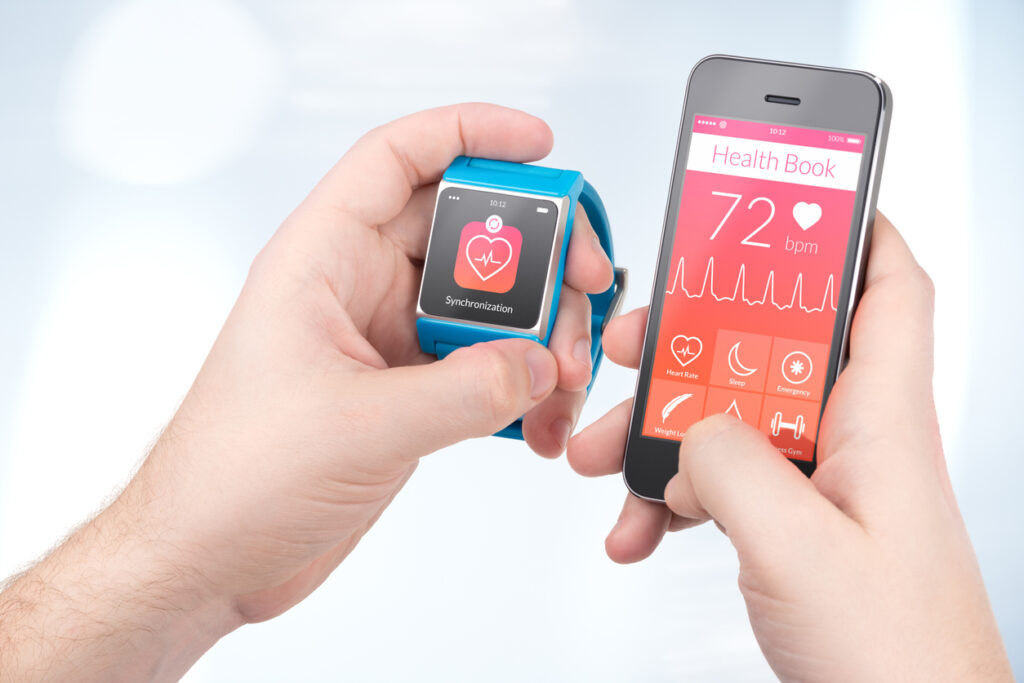The rise in popularity of wearable technology shows no sign of abating. So, how can employers embrace this new set of digital tools to improve the employee experience and enhance productivity levels?
Whilst sales of smartphones have plateaued, the adoption of wearable technology by consumers has skyrocketed.
Today, people can use their wearable devices to control and monitor their mental wellbeing, sleep, diet and physical activity.
In fact, 45% of people use their wearable technology to support their wellbeing– not to mention using the tech to read notifications and use apps.
Wearable technology
That said, the role of wearable technology in the workplace and the harnessing of wearable tech by employers has been fairly limited, until now.
This might be due to budgets and the perceived high costs of the gadgets but with their popularity showing no signs of slowing down, and connected technology becoming ever-more sophisticated, it seems inevitable that wearables will soon be making their way into our workplaces. Especially as the technology continues to increase in both sophistication and capability.
Imagine that as an employee, you wake up on the wrong side of the bed one morning, having had a terrible night’s sleep. You might be wearing a smartwatch to track your sleep. Wouldn’t it be great if you could let your employer know this, so they could send a free morning coffee to brighten up your day?
It seems inevitable that wearables will soon be making their way into our workplaces.
Or perhaps your blood pressure is increasing at work, and sensors from your smart device relay the information to your employer, prompting an email encouraging you to take time out to make a video doctor appointment there and then.
Personalised rewards
Wearable tech could be used to incentivise as well as to reward and recognise. Employers can incentivise wellbeing by creating initiatives to encourage staff to live healthier lives.
This could range from monitoring employees’ step counts and exercise or even blood sugar levels, and then responding with prizes, rewards or just a pat on the back.
Wearable tech could be used to incentivise as well as to reward and recognise.
Looking outside of the workplace, wearable technology can offer unparalleled insight into employees’ lives. Soon, employers may be able to use it to find out where their employees like to shop, eat, drink, and spend their money.
They’ll be able to segment employees into groups and tailor benefits to each individual to ensure that they are getting the most out of their salaries and feel as valued as possible.
This could mean that employees receive a voucher for Sainsbury’s instead of Tesco dependent on their location, or receive geo-targeted deals for a local restaurant.
Invasion of privacy?
The positive and negative effects of this technology on employee engagement should not be underestimated. When an employer is able to ensure that employees feel valued and looked after, they unlock discretionary effort which of course leads to increased productivity.
That said, questions around data usage remain at the centre of this technological evolution – do employees want their employers to know where and how they’re spending their weekends? Could this be considered a little too big brother? Possibly, however there’s a lot to be gained.
Do employees want their employers to know where and how they’re spending their weekends?
On a personal note, wearable technology is also incredibly useful for health and safety. I have epilepsy which means that I can suffer from seizures and my wearable device is able to detect a fall which could indicate that I’ve had a seizure. This then informs my listed emergency contacts automatically which gives me peace of mind and showcases the power that these devices can have on your day to day.
For those businesses looking to successfully harness the power of wearable technology, success will depend on a number of factors, including; how employers communicate the proposition to their workforce, the level of tech adoption amongst the target employee group and the rewards on offer.
What does the future hold?
But one thing is for sure, the role of wearable technology is only going to increase throughout 2019 and beyond.
As well as being used to measure vital statistics and equip employers with the means to provide even better benefits and rewards, wearable technology is also being used as a vehicle for other technology: it is forecast that by 2020 all mobile devices (phones, tablet and wearable tech) will contain biometric technology.
However, one of the key issues with wearables is having the discipline to wear them, switch them on and download data. The future will be within radiofrequency identification (RFID) and near-field communication (NFC) which could be implanted into you as a chip.
It is forecast that by 2020 all mobile devices (phones, tablet and wearable tech) will contain biometric technology.
Already this technology is able to open specific doors, start your car and make contactless payments, but in the future these chips could be able to monitor your health automatically. This will enable you to have 24/7 access to your health statistics, which could be vital if you’re trying to improve your health.
Biometrics
The potential uses for biometrics is astonishing, both for consumers due to the increased awareness of wellbeing and for employers, employees and their needs, which is why it is my second big prediction for 2019.
We may already be using voice recognition software to send commands to our smartphones, but biometric technology – which ensures speaker recognition rather than speech recognition – can play a key role in supporting and streamlining a number of different aspects of day to day work.
Biometric voice recognition could maximise efficiencies across this entire process by enabling remote on-boarding and registration
Its impact will be felt right from the very beginning of the employee journey: during recruitment and onboarding.
Currently, HR teams spend a huge amount of time around recruitment process, whether that be paperwork, registrations, or even meeting travel both on the behalf of the prospective employee and the employer.
Biometric voice recognition could maximise efficiencies across this entire process by enabling remote on-boarding and registration to name just a couple.
Once on-boarded, biometrics can help streamline authentication and data security processes across the workplace, from warehouse entry, to single sign on between HR systems to fraud prevention, and with 75% of millennials now comfortable using biometric technology, 2019 may be an inflection point for biometric technology to move into the mainstream at work for good.






